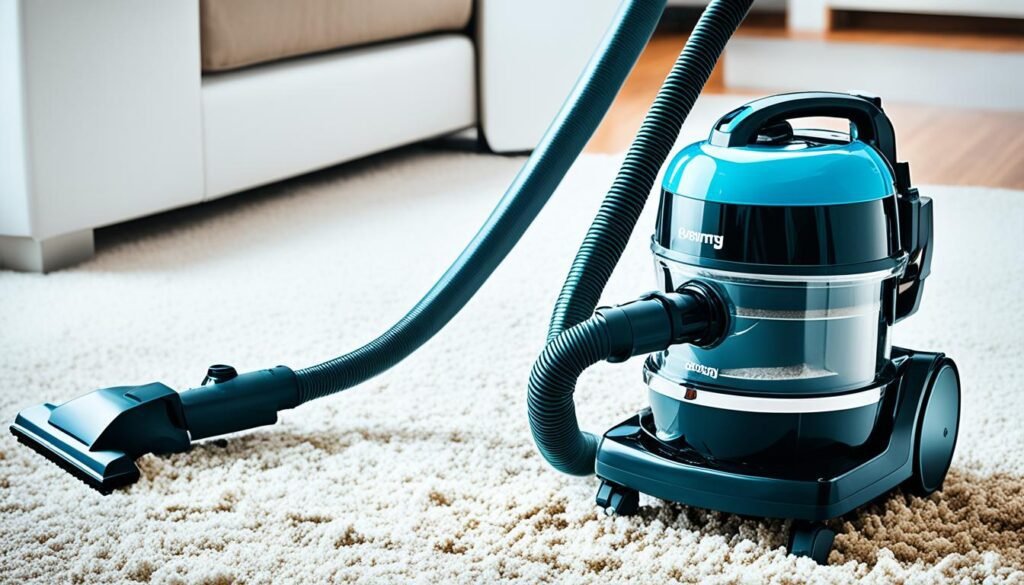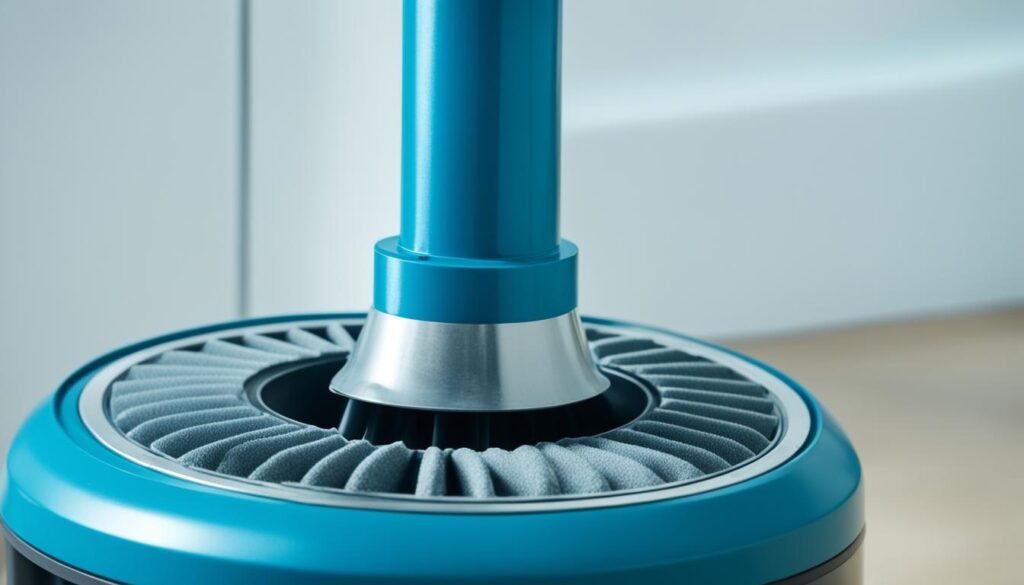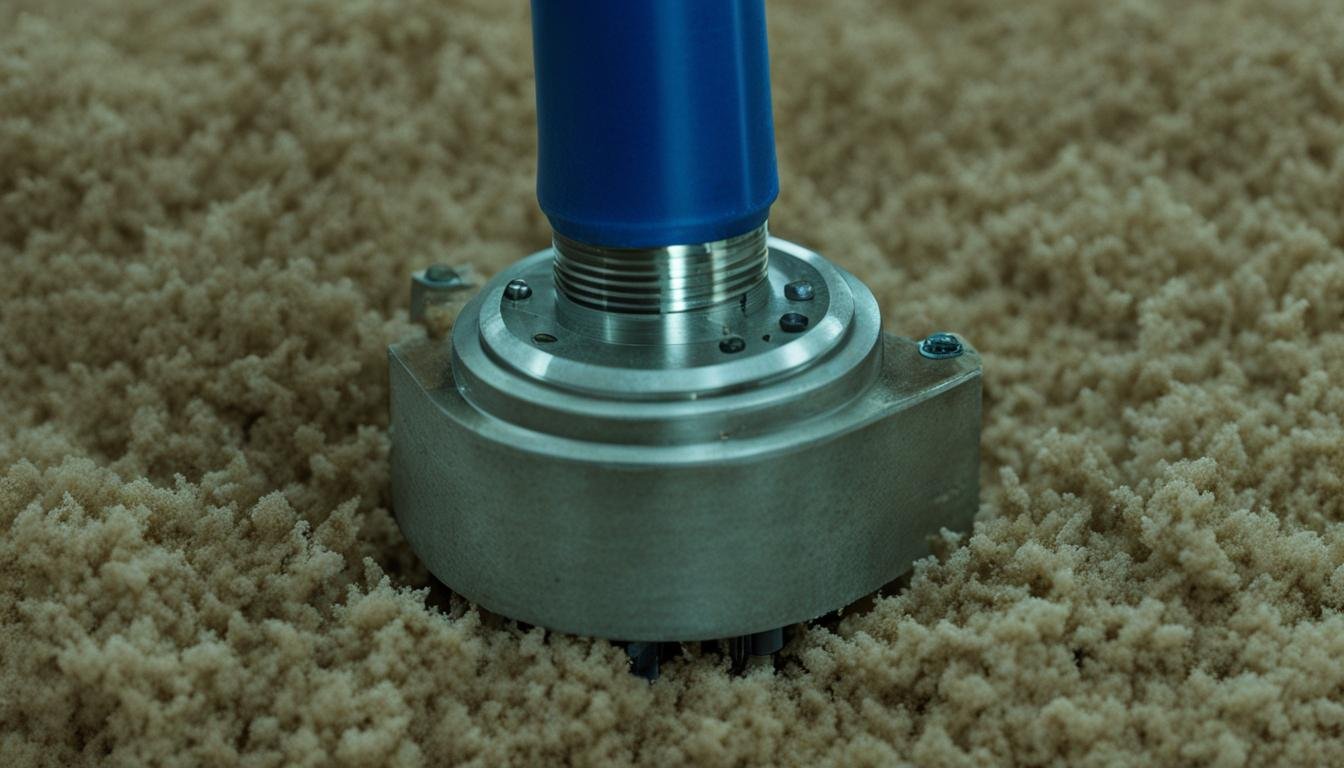Hello, I’m excited to delve into the fascinating world of vacuum cleaners with you. One crucial aspect of these cleaning devices is their suction power, which determines their ability to effectively clean dirt and debris from your home. In this article, we’ll focus on understanding kPa, or kilopascal, in vacuum cleaners and how it relates to suction power.
KPa is a unit of measurement used to quantify suction pressure in vacuum cleaners. It measures the difference between the normal atmospheric pressure and the pressure created within the vacuum cleaner hose. By understanding kPa, you can gain valuable insights into a vacuum cleaner’s suction power and its potential cleaning performance.
It’s important to note that while kPa provides valuable information about suction power, it’s not the sole factor to consider. Other units and specifications like airflow (CFM) and air watts (AW) also play a crucial role in determining a vacuum cleaner’s overall suction power and cleaning capabilities.
When choosing a vacuum cleaner with high suction power, it’s essential to consider both kPa and other specifications like airflow and air watts. By doing so, you can ensure that your chosen vacuum cleaner offers optimal cleaning performance and effectively tackles dirt and debris throughout your home.
Key Takeaways:
- kPa, or kilopascal, is a unit used to measure suction pressure in vacuum cleaners.
- Suction power is determined by a combination of kPa, airflow (CFM), and air watts (AW).
- Higher kPa values indicate greater suction pressure and potentially better cleaning performance.
- Airflow measures the quantity of air sucked by the vacuum cleaner per minute (CFM).
- Air watts (AW) consider both airflow and the vacuum cleaner’s power consumption to determine suction effectiveness.
Top Measurements for Determining Suction Power in Vacuum Cleaners
When it comes to vacuum cleaners, suction power plays a crucial role in their performance. But how is suction power determined? There are several key measurements and units that help determine the suction power of a vacuum cleaner.
The top measurements that determine suction power are airflow (CFM) and air watts (AW). Airflow refers to the quantity of air that the vacuum cleaner can intake in one minute, measured in cubic feet per minute (CFM). Higher airflow indicates higher suction power, as a greater amount of air is being pulled into the vacuum cleaner.
Air watts, on the other hand, take into account both airflow and the amount of power (watts) the vacuum cleaner produces and uses. This measurement provides a more comprehensive understanding of the vacuum cleaner’s suction power. Higher air watts generally indicate higher suction power.
When choosing a vacuum cleaner with high suction power, it is important to consider both airflow and air watts as they work together to determine the overall suction performance. A vacuum cleaner with high airflow and air watts will have superior suction power, resulting in better cleaning performance.
While airflow and air watts are the top measurements for determining suction power, it’s worth noting that other factors can also affect suction power. The design of the vacuum cleaner, the efficiency of its filtration system, and the quality of its nozzle attachments also contribute to the overall suction performance.
https://www.youtube.com/watch?v=EhcF0MH9HfQ
Understanding these measurements and units is crucial in selecting a vacuum cleaner that can meet your cleaning needs. By considering the airflow, air watts, and other important factors, you can choose a vacuum cleaner with the optimal suction power for your home.
Recommended Vacuum Cleaners with High kPa Suction Power
When it comes to finding a vacuum cleaner with powerful suction, look no further than these top recommendations. These vacuum cleaners offer high kPa suction power, ensuring exceptional cleaning performance. Let’s take a closer look at each model:
Lubluelu 202

The Lubluelu 202 is a cordless vacuum cleaner that delivers a maximum suction power of 25,000 Pa. It’s perfect for both routine and deep cleaning tasks, effortlessly tackling various types of dirt. From pet hair to coffee beans and even cereal, this vacuum cleaner leaves no trace behind. Its cordless design allows for hassle-free cleaning, providing the flexibility to move around without any limitations.
Lubluelu 006

The Lubluelu 006 is another outstanding option with a suction power of 25,000 Pa. Featuring two suction power options, it adapts to different cleaning needs seamlessly. This vacuum cleaner is versatile and efficient, ensuring optimal performance on various surfaces and types of dirt. Say goodbye to stubborn debris, dust, and pet hair with this exceptional cleaning tool.
Lubluelu 008
If you’re looking for a portable vacuum cleaner with high suction power, the Lubluelu 008 is the perfect choice. With options for both routine cleaning and more stubborn dirt removal, this vacuum cleaner provides versatility and convenience. It offers suction power options of 15,000 Pa and 9,000 Pa, ensuring efficient cleaning in every scenario.
Lubluelu SG60
For those seeking an innovative cleaning solution, the Lubluelu SG60 is the ideal option. This smart robotic vacuum cleaner boasts a high suction power of 2,700 Pa. It effortlessly tackles a range of dirt, including pet hair and debris, leaving your floors sparkling clean. With its smart features and remote control, cleaning has never been easier.
These vacuum cleaners have garnered excellent reviews from users and come highly recommended for their high kPa suction power. When deciding on a vacuum cleaner with exceptional suction performance, consider these recommendations and choose the one that best suits your cleaning needs.
Conclusion
Suction power plays a crucial role in determining the overall performance of a vacuum cleaner. Whether you’re cleaning bare floors or carpets, having high suction power is essential for achieving optimal cleaning results.
Kilopascals (kPa) is the unit used to measure suction power in vacuum cleaners. It represents the suction pressure difference between the normal atmospheric pressure and the pressure in the vacuum cleaner hose. While kPa is an important factor, suction power should not be solely determined by this measurement.
Measuring airflow (CFM) and air watts (AW) is also crucial in evaluating the effectiveness of a vacuum cleaner’s suction power. Airflow refers to the quantity of air intake, while air watts consider both airflow and the power consumption of the vacuum cleaner.
When choosing a vacuum cleaner with high suction power, it is vital to consider the kPa value along with measurements like airflow and air watts. By considering these factors, you can ensure that you select a vacuum cleaner that offers optimum suction power and delivers exceptional cleaning performance.
Take advantage of the numerous recommended vacuum cleaners available with high kPa suction power, as they have been praised for their outstanding cleaning capabilities and positive user reviews. By understanding the importance of suction power and selecting a vacuum cleaner with high kPa, you can keep your home spotless and free from dirt and debris.
FAQ
What is kPa in vacuum cleaners?
kPa stands for kilopascal, which is a unit of measuring suction pressure in vacuum cleaners. It measures the difference between the normal atmospheric pressure and the pressure in the vacuum cleaner hose.
How does kPa affect the suction power of a vacuum cleaner?
A higher kPa value indicates higher suction pressure and better suction power. However, suction power is not solely determined by kPa, but also by other units and specifications such as airflow (CFM) and air watts (AW).
What are the top measurements for determining suction power in vacuum cleaners?
The top measurements that determine suction power are airflow (CFM) and air watts (AW). Airflow refers to the quantity of air sucked by the vacuum cleaner in one minute, while air watts measure the effectiveness of a vacuum cleaner’s suction power by considering both airflow and the amount of power (watts) the vacuum cleaner produces and uses.
How do airflow and air watts affect the suction power of a vacuum cleaner?
Higher airflow and air watts generally indicate higher suction power, resulting in better cleaning performance. When choosing a vacuum cleaner with high suction power, it is important to consider both airflow and air watts, as they work together to determine the overall suction performance.
Are there any vacuum cleaners recommended for their high kPa suction power?
Yes, there are several vacuum cleaners on the market that offer high kPa suction power and excellent cleaning performance. Some recommended models include the Lubluelu 201, Lubluelu 006, Lubluelu 008, and Lubluelu SG60.
Are there any other factors that can affect suction power besides kPa?
Yes, other factors such as the design of the vacuum cleaner, filtration system, and nozzle attachments can also affect suction power. It’s important to consider these factors when choosing a vacuum cleaner.





Leave a Reply